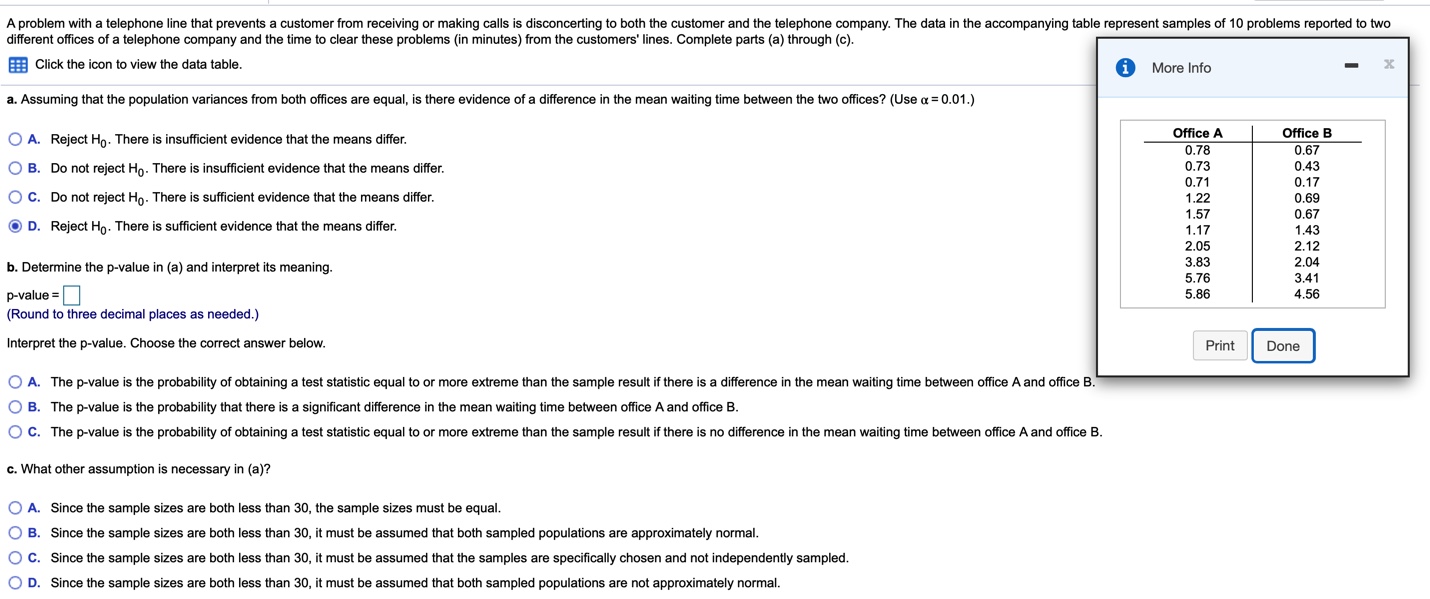Answered step by step
Verified Expert Solution
Question
1 Approved Answer
A problem with a telephone line that prevents a customer from receiving or making calls is disconcerting to both the customer and the telephone company.
A problem with a telephone line that prevents a customer from receiving or making calls is disconcerting to both the customer and the telephone company. The data in the accompanying table represent samples of 10 problems reported to two different offices of a telephone company and the time to clear these problems?(in minutes) from the?customers' lines. Complete parts?(a) through?(c).

Step by Step Solution
There are 3 Steps involved in it
Step: 1

Get Instant Access to Expert-Tailored Solutions
See step-by-step solutions with expert insights and AI powered tools for academic success
Step: 2

Step: 3

Ace Your Homework with AI
Get the answers you need in no time with our AI-driven, step-by-step assistance
Get Started


